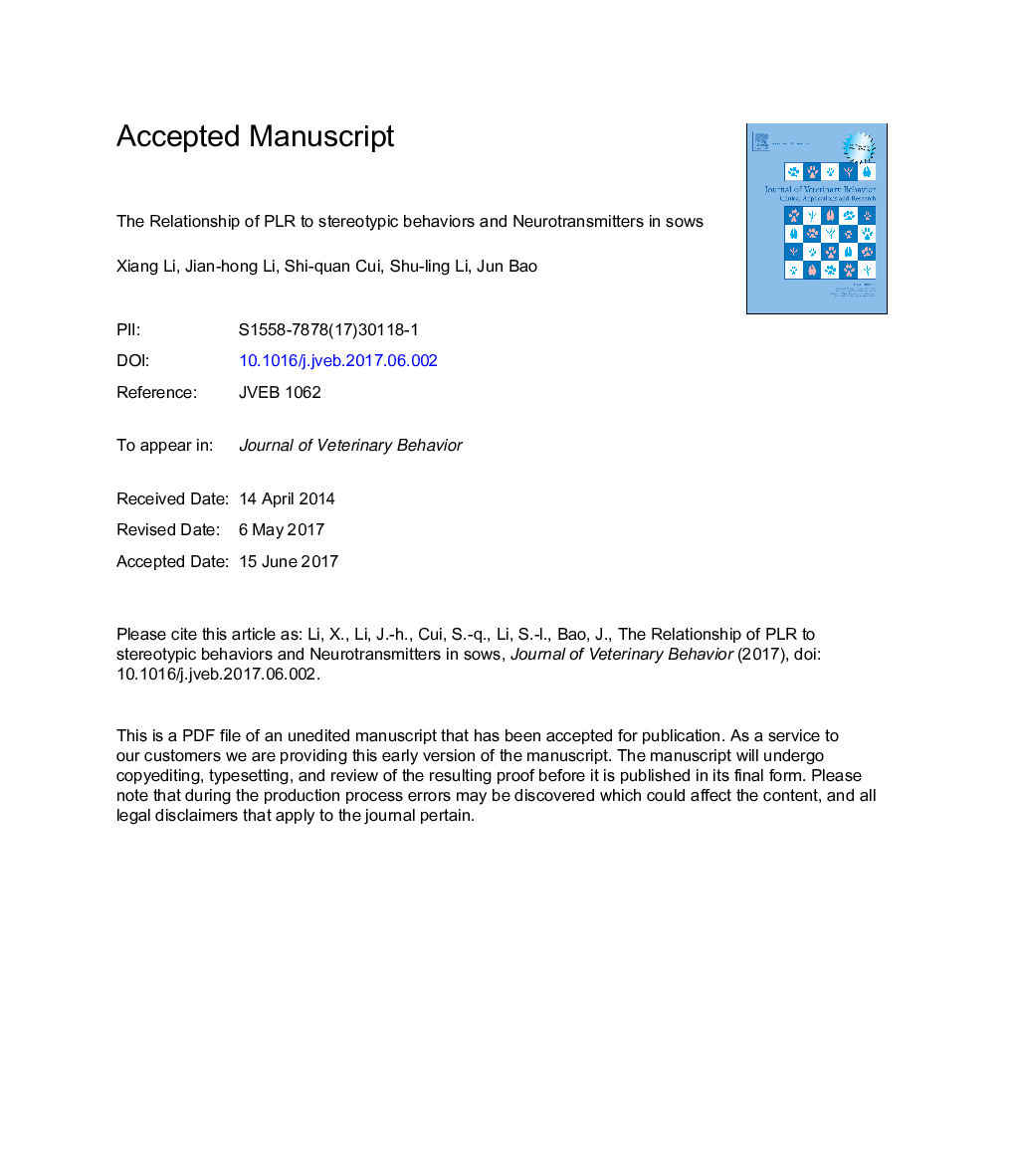| Article ID | Journal | Published Year | Pages | File Type |
|---|---|---|---|---|
| 5535982 | Journal of Veterinary Behavior: Clinical Applications and Research | 2017 | 17 Pages |
Abstract
This study aimed to validate the relationship between pupillary light reflex (PLR) and stereotypic behaviors or serum neurotransmitters in confined sows. Eight long PLR latency (LL) sows (reaction time â¥10 seconds) and 8 short PLR latency (SL) sows (time of PLR <10 seconds) were selected from 334 sows, and their stereotypic behaviors and neurotransmitters (dopamine [DA] and 5-hydroxytryptamine [5-HT]) in blood serum were measured. The results showed that both LL and SL sows showed no significant differences in lying, standing, and rooting behaviors (P > 0.05). Sitting in LL sows was significantly higher (P ⤠0.05), and grooming was lower in frequency (P < 0.05) than SL sows. For mouth-related behaviors, no difference was found for bar-biting between the 2 sow groups (P > 0.05), but trough-biting and sham-chewing in LL sows were higher than for SL sows (P ⤠0.05). However, DA and 5-HT levels were higher in LL sows than SL sows (P = 0.05 and P = 0.02, respectively). The results also indicated that bar-biting was negatively correlated with 5-HT levels (r = 0.542; P < 0.01) and sham-chewing was positively correlated with 5-HT levels (r = 0.582; P < 0.01), whereas trough-biting behavior was positively correlated to DA levels (r = 0.499; P = 0.01). The results of this study suggest that sows' PLR is related to serum neurotransmitters and stereotypic behaviors and that the prolonged latency of PLR might have potential to be indicator of chronic stress or depression.
Related Topics
Life Sciences
Agricultural and Biological Sciences
Animal Science and Zoology
Authors
Xiang Li, Jian-hong Li, Shi-quan Cui, Shu-ling Li, Jun Bao,
